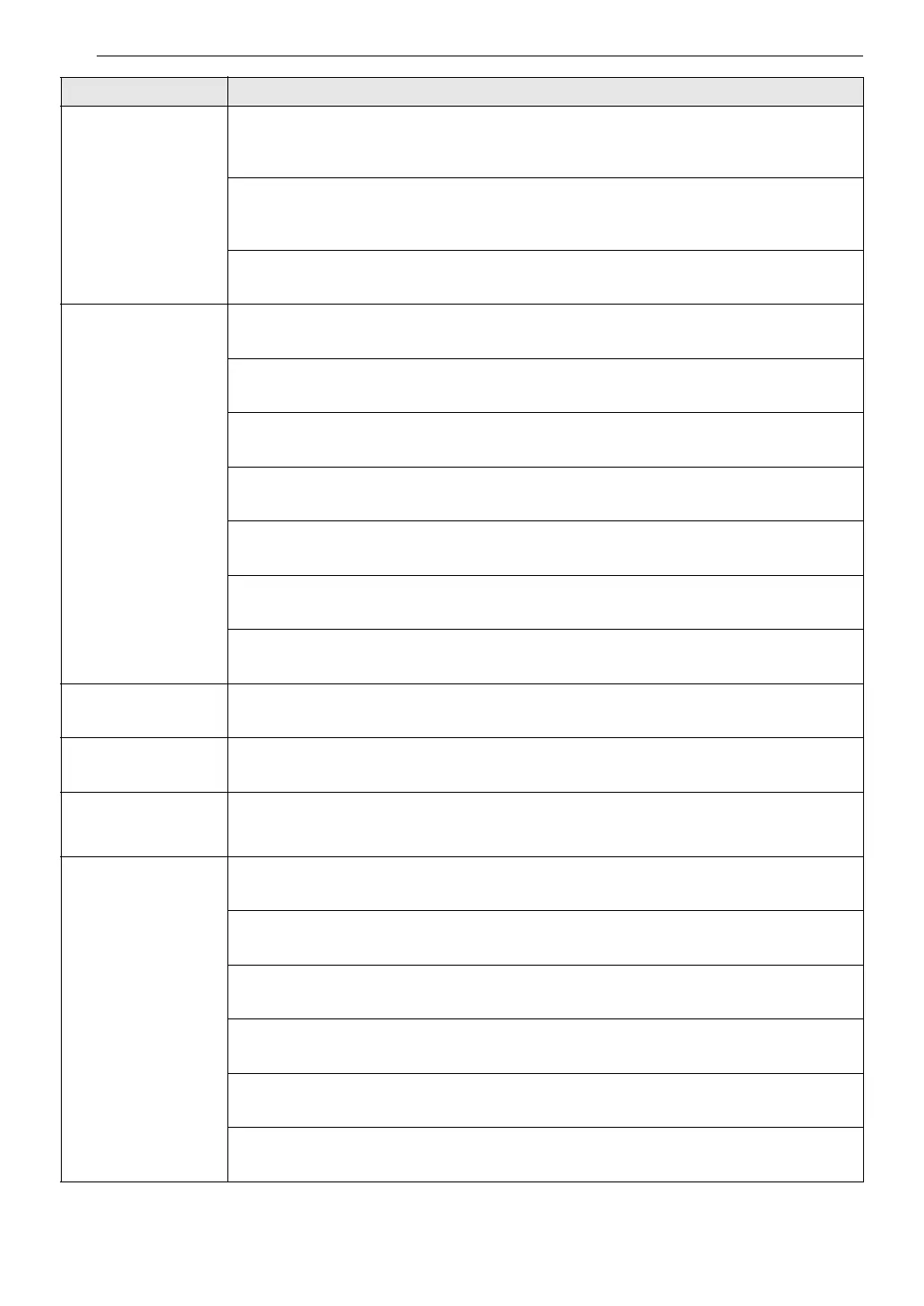54 TROUBLESHOOTING
Odor There is food in the bottom of the appliance or in the filter.
• Clean the filter and the interior according to the Maintenance section of the owner’s
manual.
Unwashed dishes are left in the appliance for a long time.
• Run a cycle with one cup of white vinegar in a dishwasher safe glass or bowl placed on the
upper rack. (Vinegar is an acid, and with constant use it could damage your appliance.)
After cleaning, the appliance smells like detergent.
• This is normal.
Food soil remains on
dishes.
Improper cycle selection.
• Select correct cycle based on soil level and type of dishware being washed.
Water temperature is too low.
• Check water supply connection or water heater setting.
Dishwashing detergent was not used.
• Use recommended detergent.
Low inlet water pressure.
• Water pressure should be between 20 and 80 psi.
Water jet holes on spray arms blocked.
• Clean the spray arms.
Improper loading of dishes.
• Make sure dishes do not block spray arm rotation or interfere with detergent dispenser.
Filters are clogged.
• Clean filters.
Cloudiness on
glassware.
Combination of excessive detergent and hard water.
• Use less detergent and use a rinse aid to minimize the problem.
Black or gray marks
on dishes.
Aluminum items rubbing dishes during cycle.
• Reposition the dishes.
Yellow or brown film
on inside surfaces of
dishwasher.
Coffee or tea stains.
• Eliminate the stain by using a stain removal product.
Spots and filming on
dishes.
Low water temperature.
• Water supply should be at least 120 °F for best wash performance.
Overloading.
• Do not overload the dishwasher.
Improper loading.
• See the Operation section.
Insufficient water pressure.
• Water pressure should be between 20 and 80 psi.
Insufficient detergent.
• Add the recommended amount of detergent. See the Operation section.
Rinse aid dispenser is empty.
• Refill rinse aid dispenser.
Problem Possible Cause & Solution

